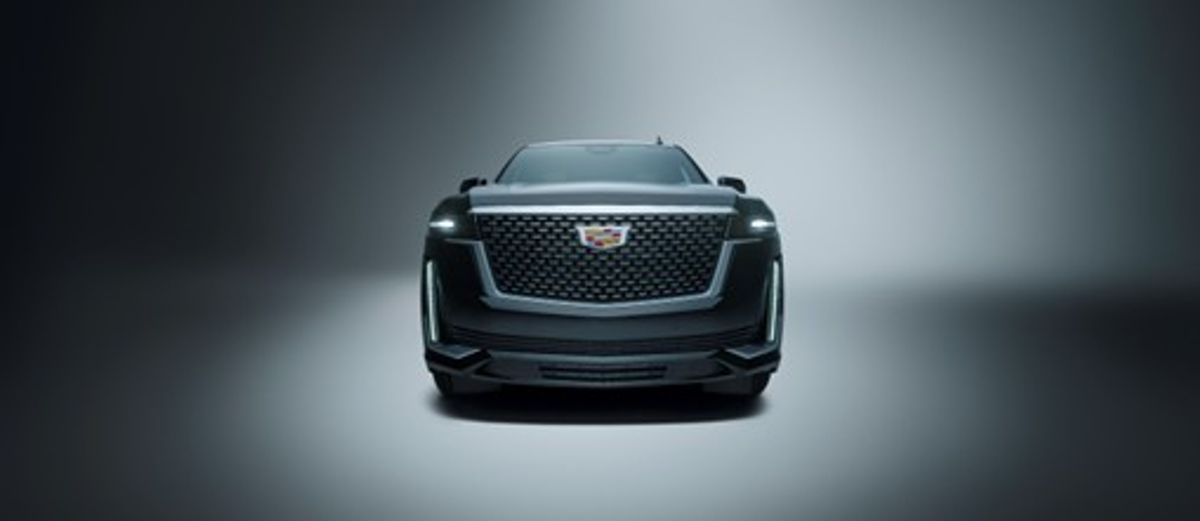Deciding how to arrange your company vehicles doesn't have to be difficult. This guide highlights what you need to know about leasing, buying, and subscriptions, so you can choose the best option for cash flow, tax, and operations.
Leasing reduces upfront and monthly costs, but imposes mileage limits, charges for wear and tear, and leaves you with no asset at the end of the term. Buying gives you ownership and depreciation or a Section 179 tax relief, but it locks up capital and comes with higher repayments. A car subscription like SIXT+ replaces long-term commitment with month-to-month flexibility, all-inclusive maintenance, no deposit, and the ability to swap or cancel after 30 days, which suits startups, seasonal demand and unpredictable fleets.
Our guide explains tax treatment, like standard mileage versus actual expenses, inclusion amounts for luxury cars and sales tax on lease payments, and includes a side-by-side comparison. Read on for practical scenarios and the precise questions to ask before you commit.
Table of Contents

What is a business car lease?
Business car leasing is a financial agreement for companies to use new vehicles for a fixed period through monthly payments. Under a lease, the business pays fixed monthly fees to use the car for a set term instead of buying it outright. At lease-end, you usually return the vehicle, but sometimes have the option to buy it. The leasing company owns the car, and your business is responsible for any agreed-upon maintenance, insurance, and lease terms.
Business leases come with qualifications. Lenders typically require your company to have an Employer Identification Number (EIN), proof of income or financials, and a good business credit profile. Startups or small businesses with limited credit may need a personal guarantee or a larger down payment. Because the business is the official lessee, the car's use and related costs are tracked in the company's name.
Key points of a business lease include:
- Fixed monthly payment: This covers depreciation of the car plus financing and fees. Payments are usually lower than loan payments on the same vehicle.
- Term and mileage: Leases have set terms, e.g., 36 months, and mileage limits. Excess miles incur extra fees.
- Lease-end options: At the end, you can return the car or potentially buy it at a preset price.
- No ownership: Since you never fully own the vehicle, there's no residual value on your balance sheet, unless you purchase it.

Many businesses use leasing to keep cash tied up in operations instead of vehicles. It avoids the full purchase cost and depreciation hit of buying, and gives you a newer car without a big capital outlay.
Advantages of leasing a car for your business
Leasing offers several benefits that businesses often find attractive:
- Lower upfront costs: Typically, a business car lease requires a smaller down payment and lower monthly payments than financing and buying the same model. This can help small businesses and startups preserve cash flow or working capital.
- Budget predictability: You know your lease rate in advance, so budgeting is easier. Leases are usually fixed and predictable over the term, unlike the costs of owning an older car.
- Access to new vehicles: Leases generally run 2–3 years, so a business can upgrade to newer models regularly. This keeps company cars up to date with the latest safety and tech features.
- Warranty coverage: Many leased vehicles stay under the manufacturer's warranty for the entire lease, covering maintenance and repairs, and reducing unexpected expenses.
- Option to buy: If you like the car or market values drop, closed-end leases often include a purchase option at lease-end. Your business can buy the car for the agreed residual price if it makes sense.
- Off-balance-sheet financing: Business vehicle leasing keep assets and debts off the balance sheet, which can improve financial ratios.
Drawbacks of business vehicle leasing
Although business car leases are a popular choice for many, especially over purchasing, there are also various drawbacks to leasing:
- Mileage and usage limits: Leases impose annual mileage caps, and if you exceed the limit, you pay per-mile penalties.
- Wear-and-tear charges: Leasing companies expect vehicles to be brought back in good condition. Any excessive wear can trigger end-of-lease fees for repairs.
- No equity or asset: When you lease, you're not building ownership. At lease-end, the car belongs to the lender, so you don't gain an asset to sell or trade.
- Long-term commitment: Most leases lock you in for 2 to 4 years, and breaking a lease early can be very expensive.
- Insurance requirements: Leases often require comprehensive coverage and GAP insurance, and these costs can be higher than what a small business might choose for a vehicle.
- Approval hurdles: A business car lease usually means passing credit checks and providing business financials. New companies with limited credit history might struggle to qualify for the best lease terms.
Because of these issues, many businesses like to explore car subscriptions as an alternative. SIXT's business car subscription is a flexible program for businesses that addresses many lease drawbacks:
- Cancel monthly: You sign up for just 30 days at a time and can cancel any month. There's no 2–3 year lock-in.
- Swap vehicles: You can change to a different model after a month if needs change.
- All-inclusive pricing: The monthly fee includes registration, vehicle tax, maintenance, and even seasonal tires.
- No down payment: Subscriptions require no capital outlay or security deposit.
- On-demand flexibility: Since there's no long commitment, a subscription lets you easily adjust fleet size or adapt to seasonal needs.
Want to see how SIXT+ can save your business time and money with flexible car solutions? Get started in just minutes.

A comparison between lease vs buy vs subscribe
Below is a side-by-side look at key factors when choosing to buy, lease, or subscribe:
| Feature | Buy (Purchas) | Lease | Subscribe (SIXT+) |
|---|---|---|---|
Upfront cost | High (down payment or full price) | Moderate (usually modest down payment) | Low (no down payment) |
Monthly payment | Often higher (loan) or none if paid off | Typically lower than the loan payment | Fixed fee (all-inclusive) |
Ownership | ✅ | ❌ | ❌ |
Maintenance | ❌ No – maintenance is your responsibility | ⚠️ Partial – some may fall under warranty | ✅ Full maintenance included in subscription |
Flexibility | ❌ Low – long-term decision | ⚠️ Medium – fixed lease term with penalties for early termination | ✅ High – cancel or swap vehicles monthly |
End-of-term options | Keep or sell | Return or buy at the residual price | Cancel or upgrade/renew easily |
Tax treatment | Depreciation/Section 179 (subject to IRS limits) | Deductible lease payments (business portion) | Deductible subscription fee |
Impact on credit | Adds debt if financed | Affects credit (similar to a loan) | Lower debt impact (operating cost) |
Leasing usually has lower upfront and monthly costs than buying, but your use is restricted, and there's no asset at the end. Buying has a much higher initial cost while subscribing costs more per month but bundles services and maximizes flexibility.
Taxes and financial implications of leasing
Deductibility of Lease Payments
If your business leases a vehicle, it can usually deduct the business portion of the lease payments as an operating expense. You cannot deduct both the lease payment and the standard mileage rate, so most businesses taking lease deductions use the actual expense method. This means, if you use the car 80% for business, 80% of each lease payment is deductible. Only the business-use percentage of expenses counts, so personal driving is excluded.
Standard vs Actual
The IRS allows two ways to claim car expenses, namely the standard mileage rate or actual expenses. For a small business car lease, if you choose actual expenses, you can include lease costs along with fuel, maintenance, insurance, and more.
Section 179 and Depreciation
If you were to buy a car instead of leasing a car for business, you'd use depreciation or Section 179 expensing to recover its cost. The IRS sets limits on how much you can deduct each year for passenger vehicles. Leasing sidesteps depreciation limits, and you simply deduct the lease expense.
Luxury Vehicle Limits
High-priced vehicles have special IRS rules. If a car's MSRP is over a luxury threshold, the amount you can write off is capped. For leases, this shows up as an "inclusion amount" added back to income each year. For purchases, depreciation is limited each year.
Sales Tax
Many states treat car leases like rentals for sales tax purposes. You may pay sales tax on each lease payment instead of the full price up front. These taxes can often also be deducted as a business expense. Subscription fees usually include taxes in the monthly price.
Overall, leasing a car for business can be treated as a tax-deductible expense to the extent of business use. For more examples, see our small business tax deduction guide, and always consult a qualified tax professional to ensure compliance with IRS rules.
Is a Business Car Lease Right for Your Company's Needs?
Here are a few things to consider when you're deciding between business car leasing, purchasing, or a subscription:
- Startup or cash-strapped business: A new company with tight capital might not want to lock up funds in vehicles, so a subscription plan is usually the best here. No upfront costs or long-term commitments let you use premium vehicles as needed while keeping cash reserves for core business investments.
- Growing SMB with predictable use: If your small business has steady transportation needs, a traditional 36-month lease can give you predictability. You get lower payments and can plan your budget, while keeping the option to return the car or buy it later.
- High-mileage or asset-oriented business: Companies like delivery or field service that rack up miles or need a long-term fleet may lean toward buying. Ownership avoids excess-mileage penalties, and d
- Flexibility-needed business: If your needs change seasonally, like seasonal workers, delivery drivers, or a retail company, a car subscription might be the best choice for you. You'll get month-to-month flexibility, access to a premium fleet, and you can change vehicle categories quickly, pause your program in case of a low period, and avoid long-term agreements.
Deciding between leasing, buying, or subscribing for a business car involves weighing costs, flexibility, and tax effects. Leasing often offers lower up-front costs and access to newer cars but ties you into terms and limits. Buying gives ownership and possibly larger tax write-offs upfront, at the expense of higher payments. Car subscriptions like SIXT+ give you maximum flexibility and include services, but for a higher monthly price that is, however, including most relevant costs.
Frequent questions about business car lease
Yes. If the vehicle is used for business, you can deduct the business portion of each lease payment. You may not claim the lease payment and the standard mileage rate at the same time.
Absolutely. Leasing a company car means the lease payments are treated as a business operating expense. They can reduce taxable income on your business tax return, but only in the portion relating to business use.
The main downside is limited flexibility. Leases restrict annual mileage and typically charge for excess miles or wear. You also don't own the car, so you never build equity.
Yes. Businesses commonly lease vehicles. You would sign the lease under your company name, with your EIN, and the business makes the payments. Lenders will require business financial info and possibly a personal guarantee if your business credit is new. Companies like SIXT offer corporate accounts so businesses can subscribe to vehicles directly.
It depends on your situation. Leasing can be a good option if you want lower monthly payments, a new car every few years, and easier maintenance planning. Buying might be preferable if you drive a lot or want to keep the car longer to maximize its value. If you value month-to-month flexibility, bundled running costs, and newer cars, a business car subscription just makes sense.
Around the company car
Discover SIXT business! Find your perfect company car, rental car for your next business trip, or THE fleet solution for your company.
- best car rental for business travel
- best U.S. cities for business travel
- German company cars
- Taxable fringe benefits
- Fringe benefits examples
- How to start a delivery service
- 10 Keys to business success
- Small Business Tax Deduction
- Company car fleet management
- How to calculate business mileage
- Most common company cars
- Best apps for business travel
- Company car USA
